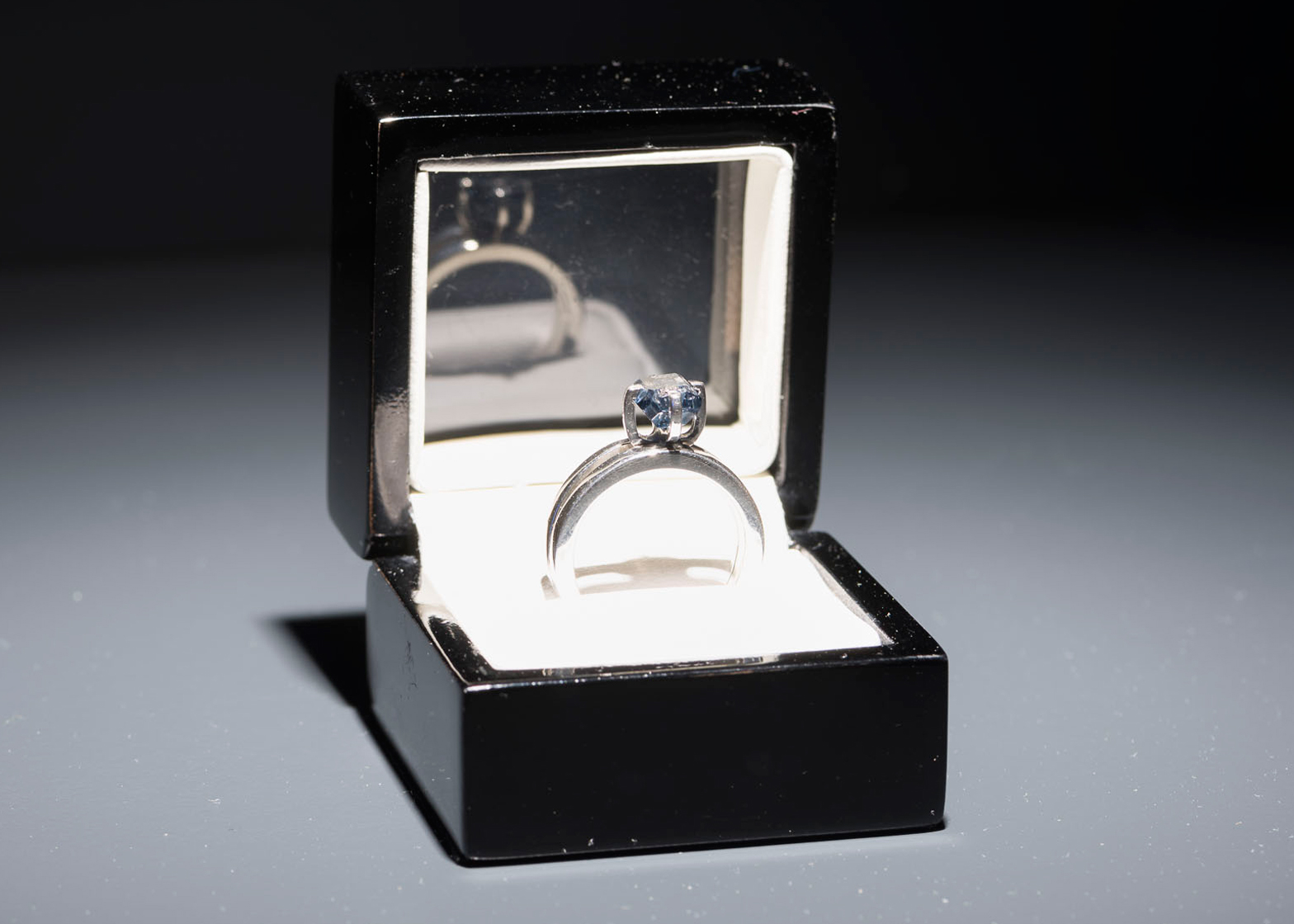An American artist has turned the remains of legendary Mexican architect Luis Barragán into a diamond, and is offering to exchange the gem for the architect's professional archive, which is currently housed on the Vitra campus (+ slideshow).
Conceptual artist Jill Magid has set the two-carat diamond made from Barragán's ashes into an engagement ring, inscribed with the text "I am wholeheartedly yours".
She is offering the ring to Federica Zanco, founder and director of the Barragán Foundation. Zanco owns the architect's professional archive after it was gifted to her in 1995 by then fiancé and later husband Rolf Fehlbaum, owner of Swiss furniture brand Vitra.
Magid wants the archive, which Fehlbaum bought alongside rights to use Barragán's name, to be returned to Mexico and the Barragán family in exchange for the ring.
The Barragan Foundation was set up to help protect the architect's legacy, and Zanco has said the money it earns from copyright fees is small. But Magid says that its control over the archive and associated copyright is problematic.
According to the artist, who specialises in work that examines systems of control and access, the archive is currently inaccessible and housed in a bunker on the Vitra campus in Weil am Rhein.
"Luis Barragán's cultural displacement, from his home in Mexico City to a vault in [Germany], has distressed architects, artists, cultural historians, and Barragán's descendants," said the artist in a project statement.
In 2013, the Fundación de Arquitectura Tapatía Luis Barragán in Mexico City, which manages the architect's work in Mexico, told the New York Times that the Barragán Foundation had attempted to charge fees for some its projects.
"From time to time, they claim that we cannot publish books, photographs or have films made in our own house — or for that matter in any other of Barragán works, without 'proper' permission from their lawyers, and, of course, a fee," the organisation said at the time.
"It would be indeed strange to have the 'rights' for Frank Lloyd Wright or Louis Kahn held and managed from another country, ruling over their work and limiting access to the American public," it added.
Barragán, who was born in 1902, is considered one of the most important architects in Mexico's history. Now considered a key member of the Modernist movement, he worked closely with the influential American architect Louis Kahn and is referenced by contemporary architects including Alvaro Siza and Ricardo Legoretta as an influence.
His built work largely consists of a collection of brightly coloured private homes and gardens, as well as a series of equestrian facilities and the Convento de las Capuchinas Sacramentarias in Mexico City. In 1980 he was awarded the Pritzker Prize, architecture's equivalent to the Nobel Prize, for "his commitment to architecture as a sublime act of the poetic imagination".
He died in 1988 at the age of 86. His former home and studio in Mexico City currently houses the Archivo design and architecture gallery founded by architect Fernando Romero, which is due to move out into a purpose-built space.
The diamond was created by exhuming the cremated remains from the Rotonda de los Jaliscienses Ilustres in Guadalajara and removing some of the ashes, which were replaced by a silver horse of the same weight.
They then underwent a chemical process to extract the carbon, which was turned into graphite and exposed to extreme heat and pressure to create the diamond. The process is available commercially as an option for the bereaved, with costs starting from around $3,000 (£2,270).
The ring forms part of an exhibition called The Proposal, which includes official permission documents from Barragan's family and the Mexican government, footage of the exhumation and correspondence between Magid and various parties.
It is on display Kunst Halle Sankt Gallen in St Gallen, Switzerland until 1 August 2016, and will move to the San Francisco Art Institute (SFAI) for a second show from 9 September until 10 December 2016.
The exhibition is the latest instalment of a multi-year work by Magid called The Barragán Archives, which aims to "examine the ethics of corporate ownership of an artist's estate".
"Magid's collaboration with the Barragán family and the Mexican government stages an engrossing sequence of questions surrounding Barragán's legacy, intellectual property, corporate control, and access to knowledge," said Hesse McGraw, SFAI vice president for exhibitions and public program, who commissioned and curated The Proposal.

